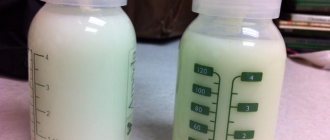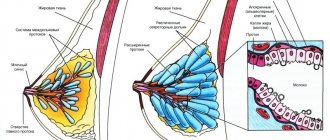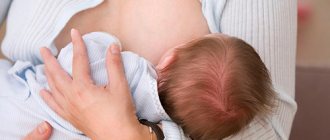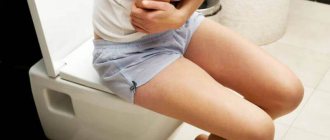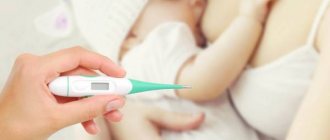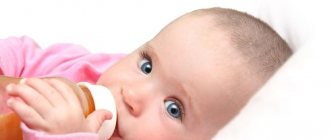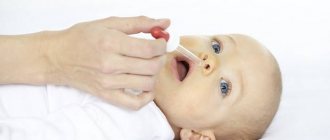Every mother knows about the benefits of breast milk. But in order for it to be as beneficial as possible for the baby, milk must be sufficiently nutritious and contain certain substances and microelements. Some breastfeeding women may be seriously concerned, suspecting that their milk is not fat enough and the baby is not getting enough to eat. How to check the fat content of breast milk at home and how to increase it, what foods contribute to increasing the fat content? Find out in this article.
What is the normal fat content of breast milk?
Mother's milk is considered a very valuable resource for the baby. This includes about 400 different microelements, the amount of which varies throughout the entire period of breastfeeding. It depends on the age of the baby and his needs. The mother’s body works in such a way that at each stage of the child’s growing up, he receives exactly the amount of useful microelements required for full development.
Mom needs to understand that the nutritional value of milk changes throughout the entire lactation period.
During the feeding process, the baby first sucks out the foremilk. It has a blue tint and contains 90% biologically active water. Such liquid is a drink for the baby, thanks to which he quenches his thirst, therefore, if the baby is exclusively breastfed, he does not need additional liquid (read the article on whether to give a newborn water during breastfeeding). Then hind milk comes in, thicker and more satisfying, which is the main nutritional product. In order for the baby to eat enough and receive the right amount of fatty milk, you need to adhere to a simple rule: one feeding, one breast.
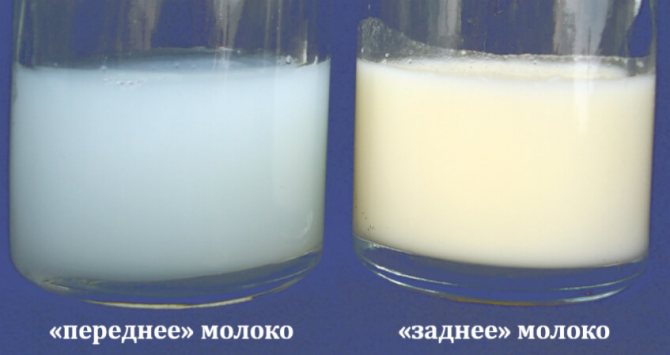
Breast milk contains such important substances as carbohydrates - 7 g, fats - 4.2 g, proteins - 1.3 g. Calorie content per 100 g of milk - 280 kJ.
It is impossible to determine the fat content of breast milk just by looking at it. And even laboratory analysis will not be able to give an accurate result, since the composition of the product can constantly change, including during feeding.
How to find out the fat content of breast milk at home
A breastfeeding woman can easily check the nutritional value of her milk on her own. However, this method is not an accurate indicator that the fat content of milk is within normal limits, and medicine does not recognize it at all.
For analysis you will need hind milk, so you must express the fore milk into a separate container.
- Express hind milk into a glass container
- Leave for 6-8 hours at room temperature. This time is enough for the cream to separate. Do not shake!
- Then use a ruler to measure the thickness of the cream. 1 mm=1% fat content. The normal fat content is 4%, therefore the thickness should be 4 mm.
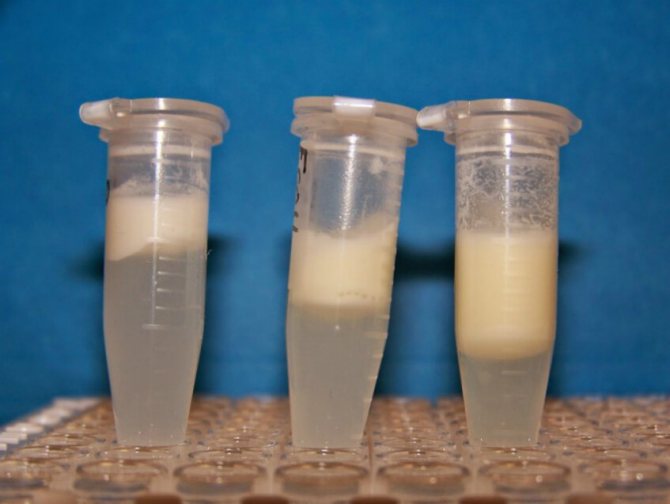
The best indicator that milk is sufficiently fatty and nutritious is the child himself. If the baby is gaining weight and feels well, then most likely the nursing mother does not have any problems with the quality of milk.
How does the fat content of breast milk change?
Breast milk is usually divided into:
- rear;
- front
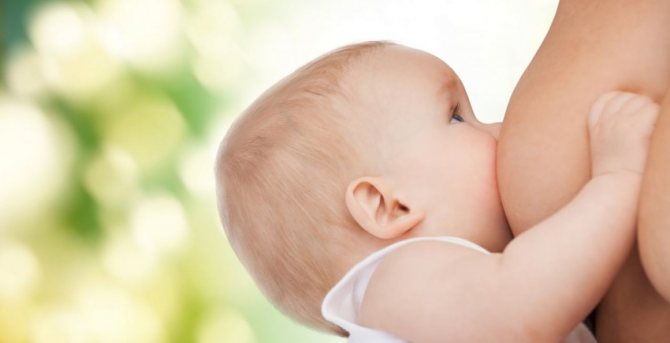
The latter contains approximately 90% water. And the back is much fattier and more nutritious.
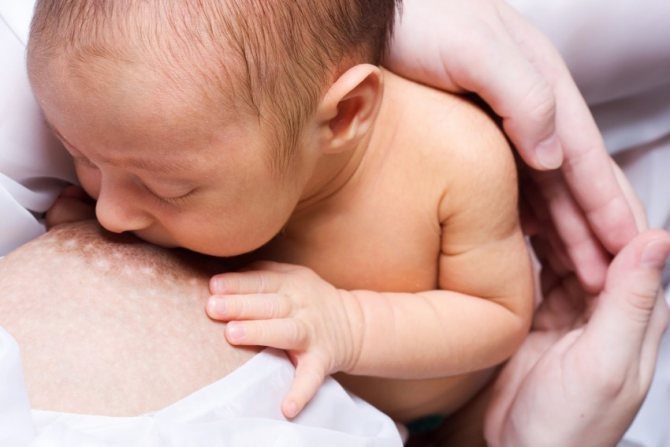
First of all, after you put your baby to the breast, he will receive foremilk. This way he will quench his thirst. Only after this, at the very end of feeding, the rear will appear.

A young mother should remember that by expressing, you can only get foremilk. This liquid is less fatty. Therefore, the question quite often arises of how to increase the fat content of breast milk. However, you don’t need to focus too much on it if your baby is gaining weight normally and looks healthy.
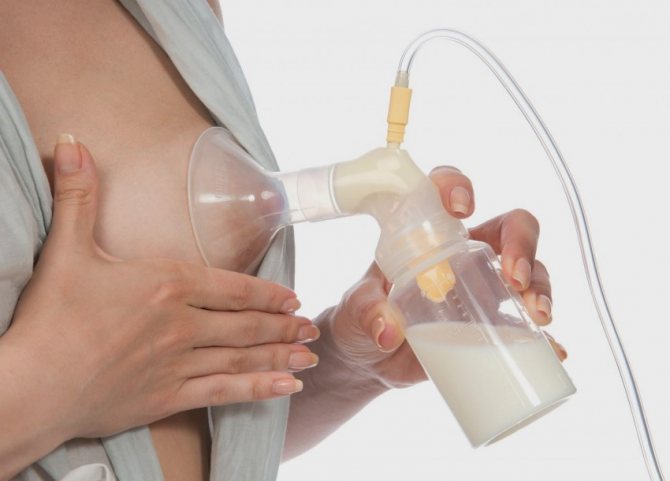
To determine whether your baby has enough milk to satiate you, you need to track his weight. In four weeks it should increase by 0.5 kg. This is the norm.
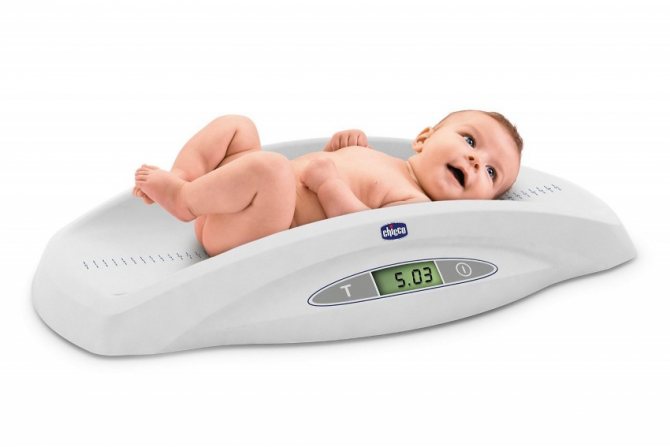
What does fat content depend on?
How much fat a nursing mother's milk will be can be influenced by heredity. In addition, if you change breasts during one feeding, the baby receives less fatty milk.
Experts say that the fat content of breast milk is influenced by 3 main factors:
- Hormones. First of all, the composition of the product depends on prolactin, which is responsible for the production of breast milk and its quality.
- Mechanical factor. The fat content of mother's milk depends on how full the breast is. When milk flows into the mammary gland and it remains swollen for some time, the liquid begins to separate. Particles of fat settle on the walls of the milk ducts. Therefore, when the mother starts feeding the baby, he first sucks out the foremilk. Fat molecules then peel off from the surface of the ducts and penetrate into the product. The longer the feeding process, the fattier and more nutritious milk the baby receives
- Individual characteristics. As mentioned above, the percentage of fat content in milk is not constant; it can change regularly throughout the entire period of lactation, and even during one feeding.
Is it necessary to increase fat content?
As in any matter, it is important not to overdo it in this matter. Determining the level of fat in breast milk at home is not difficult. To do this, you need to express a small amount of milk into a clean transparent container and leave it in the room for 6 hours. During this period of time, milk separates into its liquid part and fats.
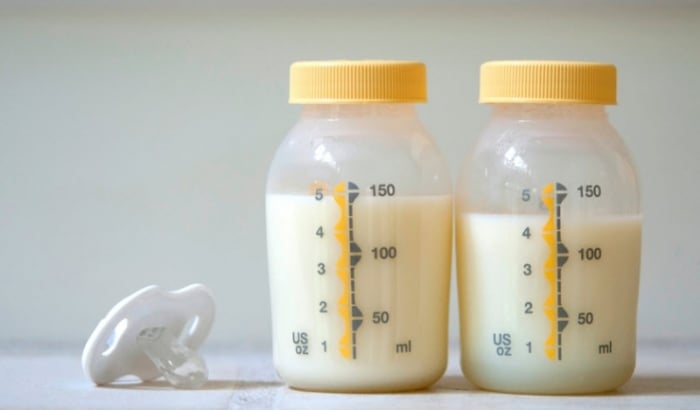
With normal indicators, the amount of fat is at least 4% of the total volume of expressed milk. If this percentage is significantly reduced, then the nursing mother should think about revising her diet.
Baby is not gaining weight well: possible reasons
Some breastfeeding women may mistakenly think that if the baby is not gaining weight, then the culprit is insufficiently fatty milk. However, the reasons may be completely different:
- Mom puts baby to breast incorrectly
- If you feed according to a schedule, not on demand
- The baby does not latch onto the nipple correctly
- The baby sucks out little milk (for example, falls asleep before reaching hindmilk)
- If you change breasts during one feeding
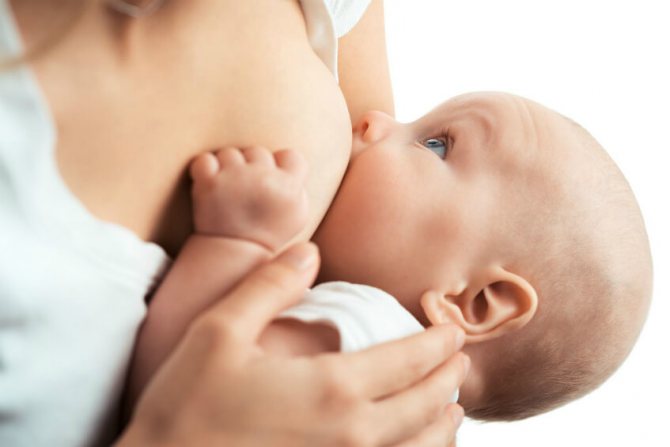
How to make milk permanently fatty
In addition to a balanced diet, the internal state of the mother also affects fat content. She should spend a lot of time in nature and not burden herself with work. By following a few rules, you can make milk nutritious:
- There is no need to pump immediately before feeding.
- It is necessary to maintain water balance.
- The baby should be fed when he wants to eat, and not according to a schedule.
- The newborn must be positioned correctly so that he can fully grasp the nipple in his mouth.
- Make the first feeding from one breast, the second from the other, i.e. alternate them each time.
- There is no need to pump after your newborn has eaten.
- Avoid stress and get enough sleep. The time allotted for sleep should take at least 8 hours.
- Massage your breasts daily.
The level of fat content in milk can also be understood by the child’s well-being: if he is active and constantly gaining weight, then there are no problems with nutrition.
The opposite situation also happens: the milk is too fatty. This leads to disruption of the children's intestinal microflora, obesity and problems with the cardiovascular system. In such cases, it is necessary to reduce the calorie content of baby food.
How to make milk fatter when breastfeeding
First of all, the mother needs to adhere to the basic rules for breastfeeding. Namely:
- Feeding on demand
- Be sure to latch on to your baby at night
- Alternate breasts through feeding
- Monitor your emotional state
- Follow proper nutrition to make milk more healthy
It is also important for women to know that the nutritional value of a product depends on its quantity. If there is little milk, then measures need to be taken to increase lactation.
What to eat
Does the fat content of breast milk depend on the mother's diet? There is an opinion that the fattier the mother's food, the fattier the milk will be. Lactation consultants argue that a nursing woman’s diet must be balanced and include more healthy foods to compensate for the lack of vitamins and microelements. And the number of calories does not affect the percentage of fat in milk. By eating a lot of high-calorie foods, mom can only add extra pounds to herself. But exhausting diets won’t lead to anything good either.
In order to improve the quality of breast milk, it is necessary to adhere to the following dietary principle: 50% - fruits and vegetables, 20% - proteins, 30% - fats.
A nursing woman’s diet must include fruits and vegetables, as well as foods rich in calcium: dairy products, cottage cheese. It is healthy to eat cereals, cheese, carrots (as well as carrot juice), dried fruit compote, cabbage, greens, raisins, beans, meat and low-fat fish.
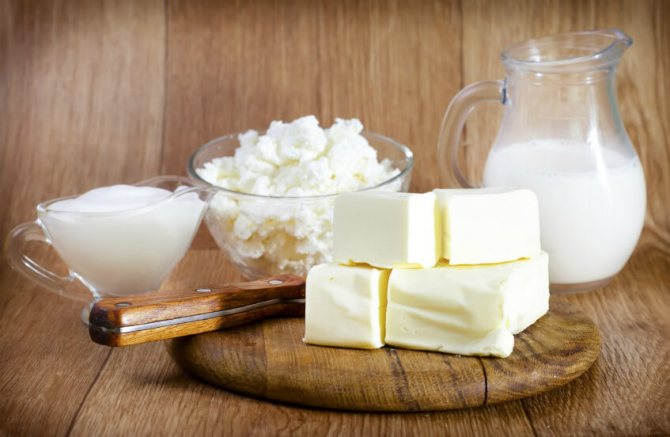
What other foods can positively affect the fat content and nutritional value of milk:
- Sour cream
- Butter
- Cream
- Cauliflower
- Porridge and muesli with milk
- Red meat
- Sunflower and pumpkin seeds
- Hazelnuts and walnuts
It must be remembered that the consumption of fried foods and smoked foods should be limited or eliminated altogether. As for walnuts and almonds, they can cause allergies in the baby, so you need to carefully monitor the baby’s reaction and eat a few a day.
How to determine at home
Many women, faced with breastfeeding problems, think about how to check the fat content of their milk. To do this, you can do a special test, for which you will need a regular ruler and a test tube.
1 way
- Express milk from one breast as completely as possible using your hands or a breast pump into any suitable container.
- Mix the milk well and fill the test tube with it to the pre-made mark on the wall of 10 cm.
- Place the test tube in the refrigerator for 6-8 hours. During this time, the milk must settle, so you cannot shake the test tube.
- In the morning, a layer of separated cream will appear in the test tube.
- You need to take a ruler and measure how many millimeters this layer is in centimeters.
- Next, divide the resulting value by 10 cm and multiply by 100%. This is the desired percentage of fat content.
Method 2
If you have accurate scales, you can do the analysis in another way. To do this, you need to prepare breast milk and let it settle, as in the previous method. You can settle in any suitable, pre-weighed container, but if it is too wide, the accuracy of the method will decrease. Next you need to do the following.
- Mark the top and bottom layers of settled cream with a marker on the wall of the container.
- Pour all the milk into another container.
- Pour water into the empty container first to the top mark and weigh.
- Then pour water to the bottom mark and weigh again.
- Calculate the difference between the obtained values, and then subtract the mass of the pre-weighed container. The result is the mass of water between the two marks.
- Divide the resulting value by the mass of water in the container, poured to the top mark without taking into account the mass of the container itself, and multiply by 100%. So, using water, we will get an approximate value for the percentage of cream in milk.
- The percentage of cream is proportional to the fat content. 15% cream corresponds to a fat content factor of 0.25. If the percentage of cream differs up or down, the fat content coefficient must also be adjusted, based on the fact that when the amount of cream changes by 1%, the fat content coefficient changes by 0.01. For example, for 14% it is 0.24.
- Now you can find out the fat content of milk by multiplying the percentage of cream by the fat content coefficient.
Example
We found that the difference in the mass of water between the upper and lower marks in the container is 2 g, and the entire mass of water is 20 g, then 2/20 * 100% = 10%. The fat content coefficient will be 0.20. Milk fat content = 10%*0.20. The resulting value is 2%.
These methods make it quite easy to conduct a mini study of the fat content in milk at home.
Useful tips
- There is no need to express the front milk, leaving only the hind milk for the baby
- Drink as much water as your body requires. There is no need to be afraid that water can make breast milk less fatty
- Divide your meals into 5-6 times. Eat small meals
- Try to be less nervous and stay positive
- Feed your baby on demand, do not limit him by time
Watch your baby. If he feels good and is gaining weight steadily, then there is no reason to worry. There is no need to try your best to increase the fat content of milk, especially since it is more difficult for a child to get milk that is too fatty, he gets tired faster and, as a result, does not get enough. In addition, digestive problems may occur.
